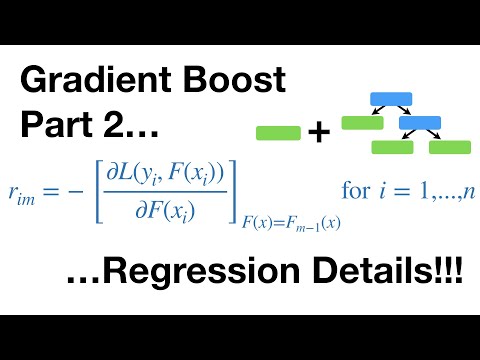Description:
Dive into the second part of a four-part video series on Gradient Boost, focusing on regression details. Learn how this popular machine learning algorithm predicts continuous values like weight. Explore the original Gradient Boost algorithm step-by-step, including data and loss function initialization, model initialization with a constant value, and the process of building multiple trees. Understand how to calculate residuals, fit regression trees to residuals, optimize leaf output values, and update predictions with new trees. Gain insights into the final prediction output and benefit from detailed explanations of each step in the algorithm. Perfect for those who have watched Part 1 and are familiar with Regression Trees and Gradient Descent concepts.

Gradient Boost Part 2 - Regression Details
Add to list